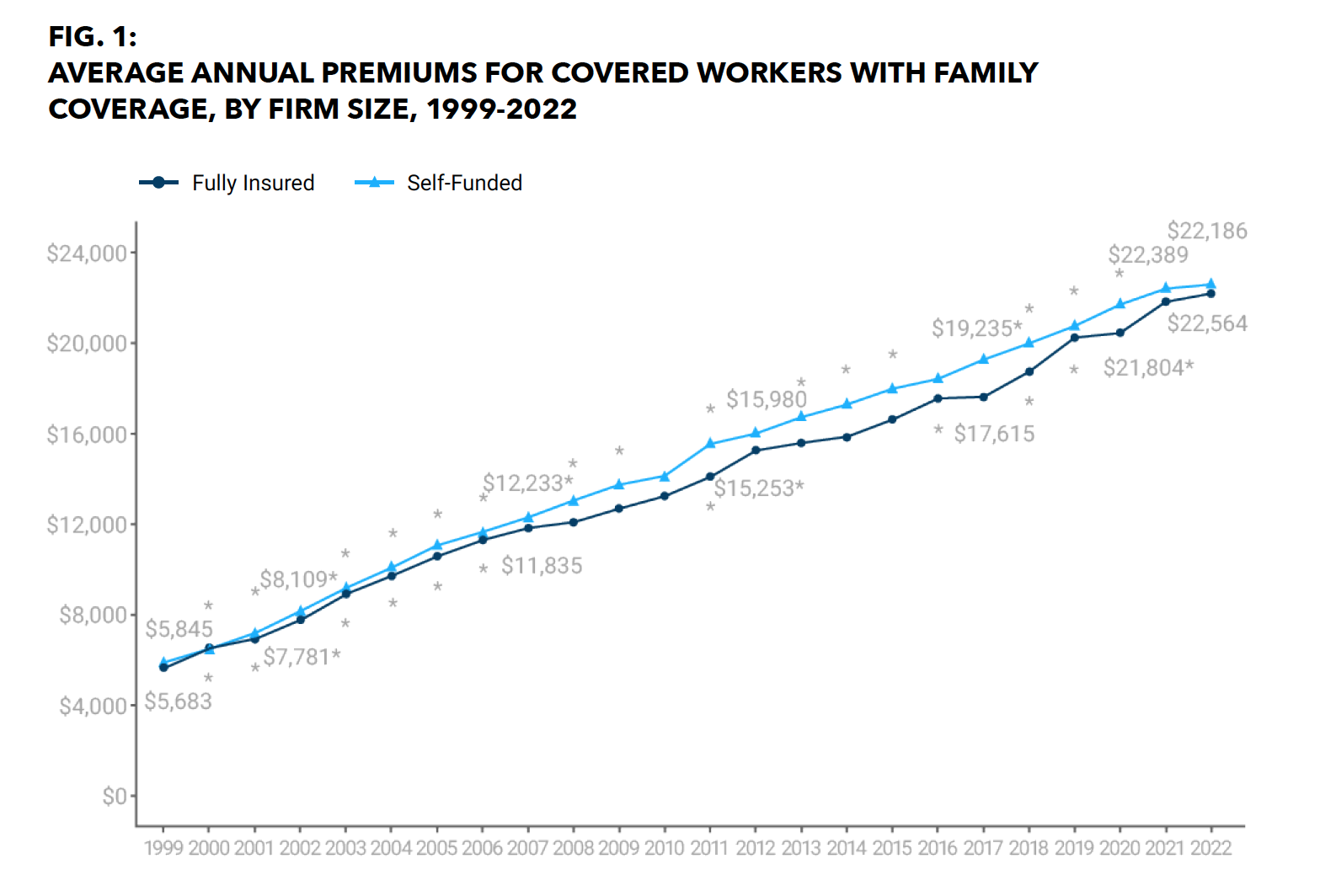In the Employer Trends in DPC 2023 report, we examined the cost savings and improved employee health outcomes that result when employers offer direct primary care (DPC) as a benefit to their employees. Whether employers offer DPC as a standalone benefit, as part of a self-insured plan, or on top of a fully-insured plan, the cost savings and the positive health outcomes are compelling.
In 2023, according to the KFF Employer Health Benefits Survey, workers’ premiums went up by 7% and employer-sponsored costs for health insurance coverage increased by 6.3%. With employer-sponsored health insurance plans along with workers’ premiums consistently increasing each year, getting more value for health coverage is paramount.

Increased costs are not showing any commensurate improvement in employee health, satisfaction, or use of the benefits they receive. Employers are searching for benefits that actually create value, both in health and in cost savings. Over the past few years, thousands of employers are choosing direct primary care to produce that value for their businesses and employees.
In the 2023 Employer Trends in DPC report, we detail case studies of cost savings and improved employee health from the implementation of DPC as a benefit. Here are some highlights from the case studies:
Orchard Health, an independent direct primary care practice based in Nashville, GA was able to save Chaparral Boats, one of the largest employers in the region, with over 600 enrolled employees, more than $1M in the course of 2 years by drastically reducing ER visits, hospitalizations, outpatient surgery costs, and overall claims costs. By focusing on preventative care and creating increased accessibility to personal doctors, Chaparral Boats experienced drastically reduced costs in ER, urgent care and specialist visits.
Primary Health Partners, a DPC network with several of its own locations in Oklahoma and a regional network was able to increase patient interactions to 6,500 over the course of a year, driving positive health outcomes for one employer with over 1,500 employees enrolled as members. The Primary Health Partners study showed that DPC members with diabetes are 39% more likely to have their Hemoglobin A1c levels controlled (HbA1c <9%) than Americans on a PPO plan. Additionally, DPC members with diabetes are 32% more likely to have their blood pressure controlled (<140/90 mm Hg) than Americans on a PPO plan.
For more insights on how thousands of employers are achieving significant cost savings and beneficial employee health outcomes by implementing DPC, download the 2023 Employer Trends in Direct Primary Care report.